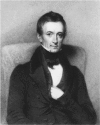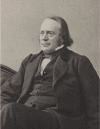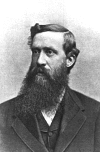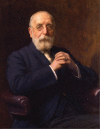Charles Davies Sherborn and the "Indexer's Club"
- PMID: 26877650
- PMCID: PMC4741212
- DOI: 10.3897/zookeys.550.9697
Charles Davies Sherborn and the "Indexer's Club"
Abstract
The first few words of the title of this symposium are "Anchoring Biodiversity Information". In order to properly anchor anything for a long-lasting future, a solid foundation needs to have been laid. For the zoological portion of biodiversity information, that firm foundation is best exemplified in the works of Charles Davies Sherborn. This man, like others of his ilk, was intimately focused on indexing names. This incredible focus was a life-long passion for him and culminated in his 9500-page Index Animalium of over 400,000 names of animals. This Index represents not only one of the most prodigious efforts in publication by a single man and the single most important reference to names in zoology, but a permanent legacy to the efforts of an indexer that proved to be an inspiration to many.
Keywords: Indexing; biography; bioinformatics; zoology.
Figures








References
-
- Agassiz L. (1846) Nomenclatoris zoologici index universalis, continens nomina systematica classium, ordinum, familiarum et generum animalium omnium, tam viventium quam fossilium, secundum ordinem alphabeticum unicum disposita, adjectis homonymiis plantarum, nec non variis adnotationibus et emendationibus. Jent & Gassman, Soloduri, 393 pp.
-
- Agassiz L, Strickland HE. (1848) Bibliographia zoologiae et geologiae. A general catalogue of all books, tracts, and memoirs on zoology and geology by Prof. Louis Agassiz [corrected, enlarged, and edited by H.E. Strickland] I. Ray Society, London, 506 pp.
-
- Agassiz L, Strickland HE. (1850) Bibliographia zoologiae et geologiae. A general catalogue of all books, tracts, and memoirs on zoology and geology by Prof. Louis Agassiz [corrected, enlarged, and edited by H.E. Strickland] II. Ray Society, London, 492 pp.
-
- Agassiz L, Strickland HE. (1852) Bibliographia zoologiae et geologiae. A general catalogue of all books, tracts, and memoirs on zoology and geology by Prof. Louis Agassiz [corrected, enlarged, and edited by H.E. Strickland] III. Ray Society, London, 657 pp.
-
- Agassiz L, Strickland HE, Jardine W. (1854) Bibliographia zoologiae et geologiae. A general catalogue of all books, tracts, and memoirs on zoology and geology by Prof. Louis Agassiz [corrected, enlarged, and edited by H.E. Strickland] IV. Ray Society, London, 604 pp.
LinkOut - more resources
Full Text Sources
Other Literature Sources
